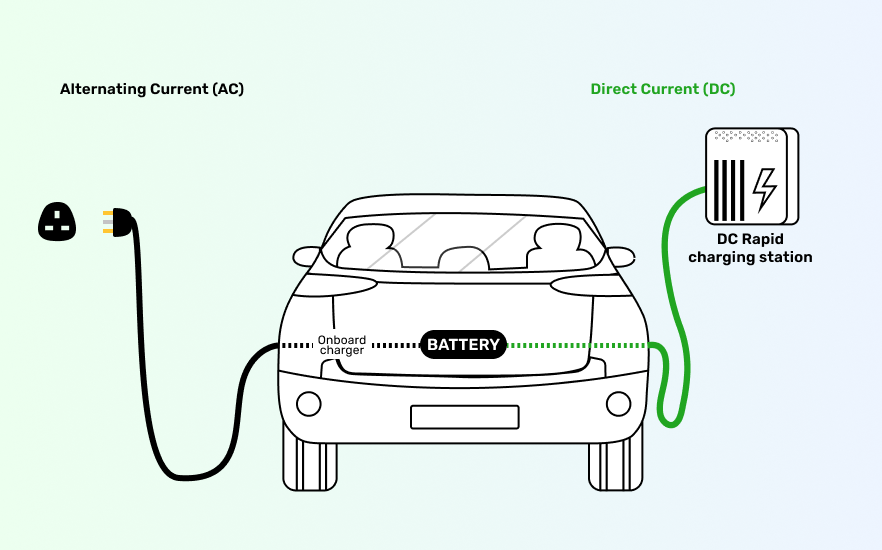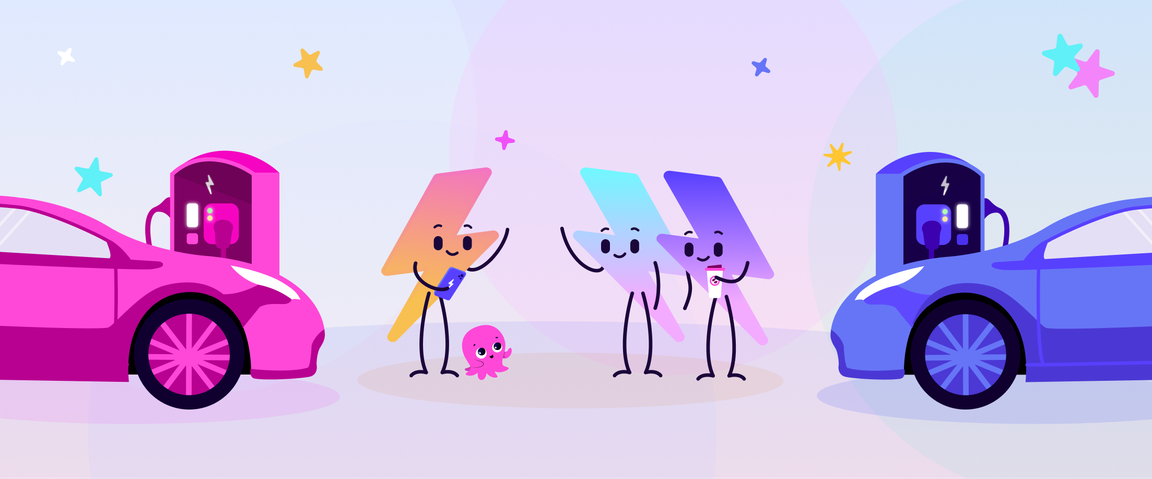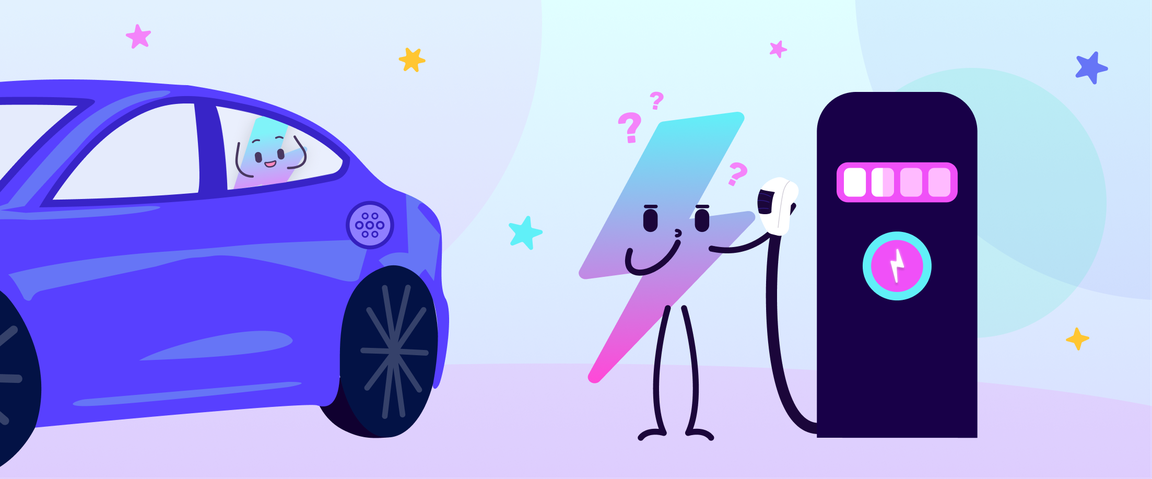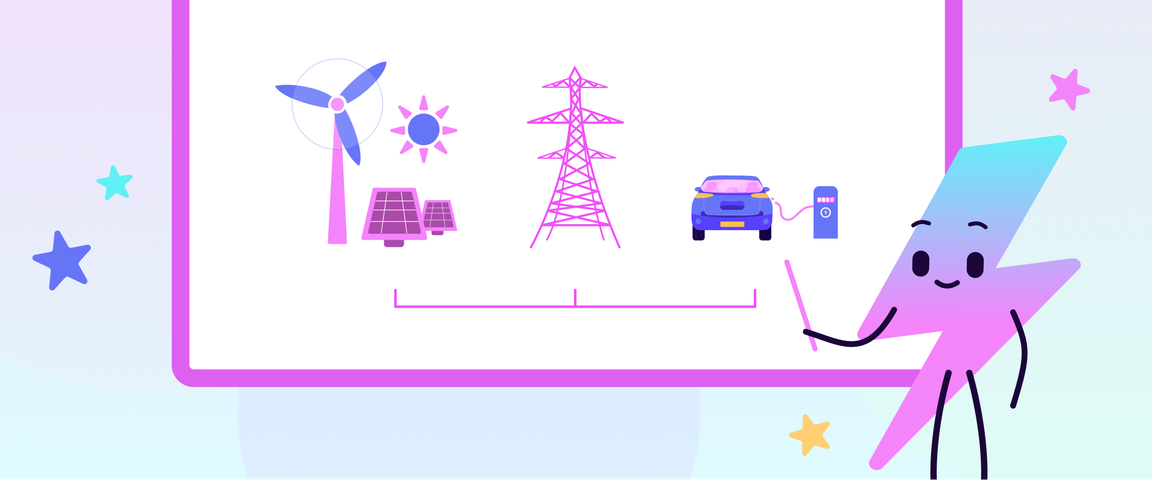For those needing a refresher:
AC = alternating current
DC = direct current
Power taken from the grid is always AC because it can transmit over great distances without much loss of power. But to store power in a battery (like in an EV), there must be a conversion to DC.
A direct current gives life to electronics as power is released from the batteries in one direction, as and when needed. Essentially this is how you can switch an EV off, turn it back on two days later, and still have charge to drive to the shops.
Depending on how you charge your EV, DC conversion either happens through the charging connector or the vehicle's onboard system. While both methods of conversion are automatic, you’ll need to be mindful of your EV's onboard system capacity (e.g. 11 kW), as this can affect the charging speed for AC connectors. So, why do DC chargers exist if an EV can convert the power itself?
It's all about speed.
Imagine the EV onboard system as the middle man - cut out the middle man, and you've got a speedy boarding pass to some super fast charging.
But DC charging is a far more complicated and costly process than its AC sibling. The average DC charging station uses 50 kW of power (over twice the average power of an AC station), and as such, it demands much more power from the grid. More power = more cost.
To get the latest charging rates*, simply go into the Electroverse app and tap on the relevant charging pin!
*Electroverse does not own any chargers on our network and does not control the rates, we simply pass through the rates provided to us by the charging provider. Where possible, we offer discounts!












